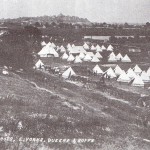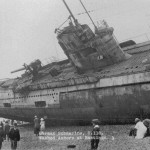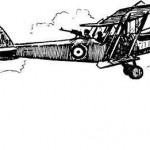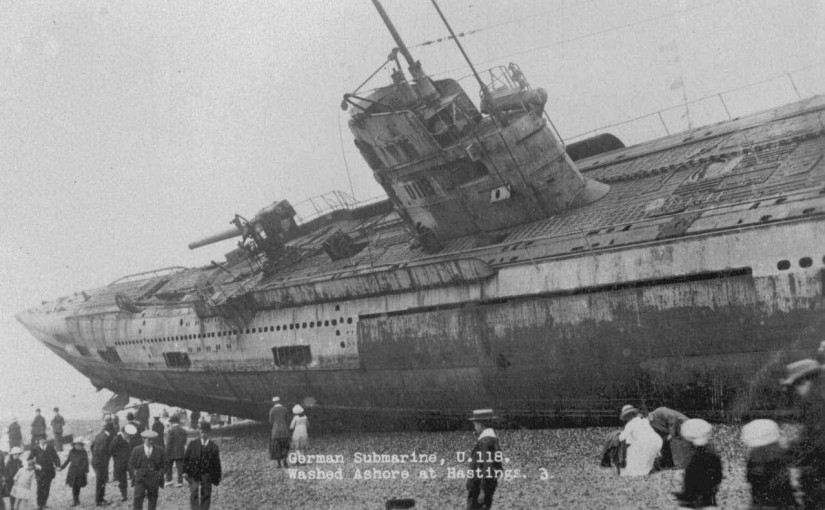BY JIM HOLLANDS
28 July 1914 was a beautiful summer day, but by the time the sun had set a terrible war had started that would not end for over four years.
By 11am on the 11 November 1918, when the armistice brought silence to the battlefields of France and Flanders, in excess of nine million souls lay dead, many never to be found and placed in a marked grave.
A resurgence of imperialism was the basic cause but such was the atmosphere for conflict, any spark could have set it off. In the event it was the assassination of Archduke Franz Ferdinand of Austria, heir to the throne of Austria- Hungary, by Yugoslav nationalist Gavrilo Princip in Sarajevo on 28 June 1914. This started a diplomatic crisis which resulted in Austria-Hungary delivering an ultimatum to the Kingdom of Serbia. International alliances, formed over the previous decades were invoked and within weeks, the major powers were engulfed in a war which rapidly spread around the globe.
On 4 August Britain declared War on Germany in response to a German invasion of Belgium. The German invasion of Belgium on August 3rd 1914 soon became a rout, their movement across Belgium and into France was swift. The Belgium army was swept aside with relative ease and the British Expeditionary Army had retreated at the Battle of Mons. The French army retreated towards the River Marne and the German advance got them as near as 30 miles to Paris. The French Sixth Army faced almost certain defeat but the situation was retrieved by 6,000 infantry reservists who were transported out to the battlefield in taxi cabs!
The Germans were forced to retreat and they withdrew to an area near the River Aisne. Here they dug trenches. Little did they guess that these trenches were to become the pattern of the war for several years to come.
At home in the early months of the War life in England went on much as before. Young men were volunteering to join the Army and Navy and there were troop movements on an ever increasing scale, but those who were not directly involve carried on as before.
Hastings Council bought a quarter of Hastings Pier in September and rebuilt it as a 220-feet square extension of the promenade. A bandstand was built and the extension was officially opened on April 19 1916.
Hythe was, and still is, the home of the Military ranges where thousands of men from as far back as the days of the Volunteers, have been trained to shoot. The people there were accustomed to the sound of gunfire. Nearby, the Shorncliff Camp, which stands on the cliff overlooking Sandgate was a hive of activity throughout the terrible days of the ‘War to end all Wars’ 1914-18. Six hundred thousand Canadian enlisted men and boys flocked to England during the Great War and became an integral part of the English communities in which they lived and trained. Shorncliffe, was the largest of the Canadian bases, located on the Kent coast and just twenty miles from France. As the transitory home to thousands of Canadian soldiers, it was dubbed “a suburb of Toronto”. Sadly, around sixty thousand Canadians never returned and the futility of the conflict was summed up by one Shorncliffe transient, Lt. Colonel John McCrae, who in 1915, wrote ‘In Flanders Field’, one of the most significant war poems of the time. Relations between the Canadian soldiers and their Kentish neighbours remained extremely good throughout the war.
Embarkation Camps at Hastings and Rye housed thousands of men on their way to the ports of Folkestone and Dover. Here they boarded ferries for the short trip across the Channel to the killing fields of of France and Flanders. Many were to see England for the last time as the white cliffs disappeared into the mist on the horizon behind them. 
None of those who experienced the trench warfare would ever be the same again. Gone for them was the innocence of youth as they tried to survive in the mud, blood and filth of the once beautiful countryside that was rapidly being torn to pieces by shells, bombs and bullets. The dreaded gas attacks left men blinded and burned their lungs. ‘Hell on Earth’ is an apt description for the devastated and deadly landscape that millions of men endured or died in during those four terrible years.
After the Battle of the Marne came the first Battle of Ypres then trench warfare set in and the lines moved forward and back by yards rather than miles as battle after battle saw men die in their thousands.
Air warfare was in its infancy. Pilots were shooting at each other with pistols The first Zeppelin raid on Britain took place on 19 January 1915. A month later the Royal Navy bombarded Turkish forts in the Dardanelles and on 25 April Allied troops landed in Gallipoli. On 7 May the “Lusitania” was sunk by a German U-boat and later that month Italy declared war on Germany and Austria.
The Battle of Loos commenced on 5 September, again with massive losses on both sides and on 19 December the Allies started the evacuation of Gallipoli.
By January 1916 the rate of attrition was so great that compulsory conscription had to be introduced introduced in Britain. In February the Battle of Verdun turned into a blood-bath. May 1916 and the two great navies clashed at the Battle of Jutland.
The Battle of the Somme started on 1 July and continued to November. Appalling casualty figures suffered by the British and the French. By the end of the battle, the British Army had suffered 420,000 casualties including nearly 60,000 on the first day alone. The French lost 200,000 men and the Germans nearly 500,000. During the battle, in September, came the first en masse use of tanks. Though the tank was highly unreliable – as one would expect from a new machine – it did a great deal to end the horrors of trench warfare and eventually brought back mobility to the Western Front.
On 1 February 1917. Germany’s unrestricted submarine warfare campaign started and on 6 April America declared war on Germany.
31 July saw the start of the Third Battle at Ypres and Britain launched a major offensive on the Western Front on 6 November. Later that month British tanks won a victory at Cambrai
On 5 December the Russian army collapsed and an Armistice between Germany and Russia was signed freeing up thousands of German troops to reinforce the Western Front.
On 21 March 1918 the Germans broke through on the Somme and on 9 April Germany started an offensive in Flanders.
Today all the men that survived that cruel war are gone and none of us left have first hand memories.
In 1967 I had a conversation with an old Rye veteran in the Gungarden next to the Ypres Castle in Rye which brought me nearer to the reality of those desperate times than any footage or written description. He had spent two years in the trenches. As he recounted his memories he was staring out over the Channel towards France and for more than an hour I listened as he told of going ‘over the top’, gas attacks, the friends he had lost and of the gradual process that seemed to harden him against every new horror that he witnessed.
He recalled the 1918 German offensive on the Western Front. Which started with an attack on British forces near Amiens. German forces achieved an unprecedented advance of almost 40 miles. His unit withdrew as the Germans advanced.
In the event the Germans were only 75 miles from Paris when they were stopped. Railway guns fired 183 shells on the capital, causing many Parisians to flee. The offensive was so successful that Kaiser Wilhelm II declared 24 March a national holiday. Many Germans thought victory was near.
He was behind the lines in a reserve unit and witnessed first hand the prelude to the Allied counter offensive, known as the Hundred Days Offensive, which began on 8 August 1918, with the Battle of Amiens.
“During the hours of darkness hundreds of guns, large artillery pieces, were brought up to the line.
“They stood almost wheel to wheel in a line that ran for miles. Before dawn broke a cannonade began that filled the air with so much noise it was impossible to speak. The bombardment of the German lines continued for hours. No man could have been unmoved by the power and destruction being dealt to the enemy”.
The battle involved over 400 tanks and 120,000 British, Dominion, and French troops, and by the end of its first day there was a gap of 24 miles in the German lines. It was a Black Day of the German army. The Allies advanced up to 14 miles before German resistance stiffened and the battle was over by 12 August.
Three months later the Germans were able to fight no more On 11 November, at 5:00 am, an armistice with Germany was signed in a railroad carriage at Compiègne. At 11 am on 11 November 1918 – “the eleventh hour of the eleventh day of the eleventh month” – a ceasefire came into effect.
Aftermath of WW1. The German U Boat that washed up on Hastings Beach in 1919
 Lympne Aerodrome was a staging point getting new aircraft to France and the front in WW1
Lympne Aerodrome was a staging point getting new aircraft to France and the front in WW1
From the February 2014
All articles, photographs and drawings on this web site are World Copyright Protected. No reproduction for publication without prior arrangement. © World Copyright 2017 Cinque Ports Magazines Rye Ltd., Guinea Hall Lodge Sellindge TN25 6EG
